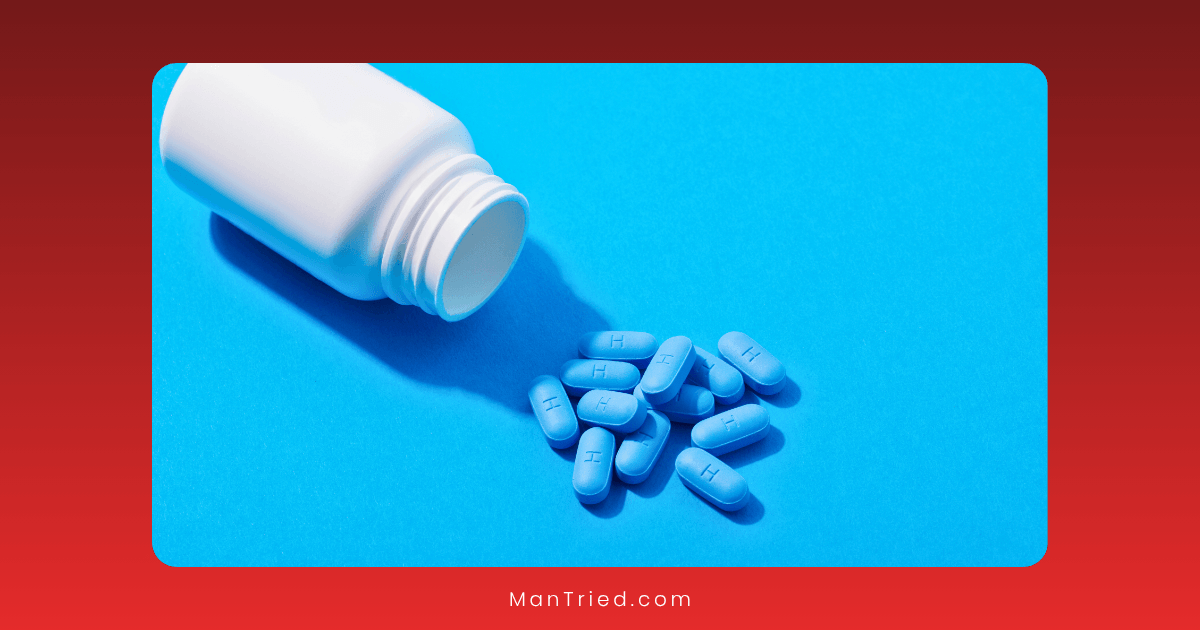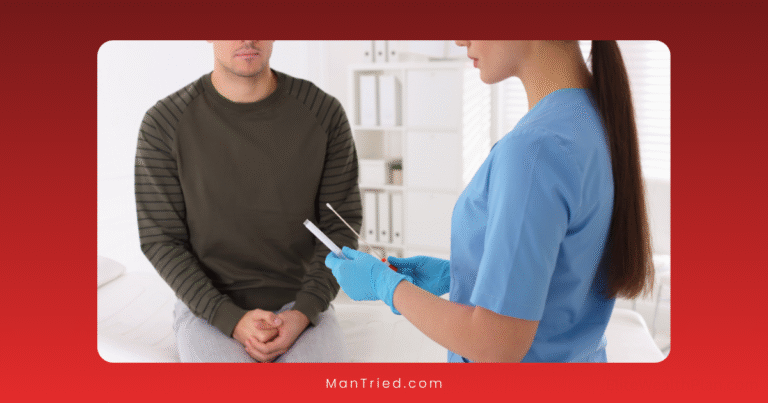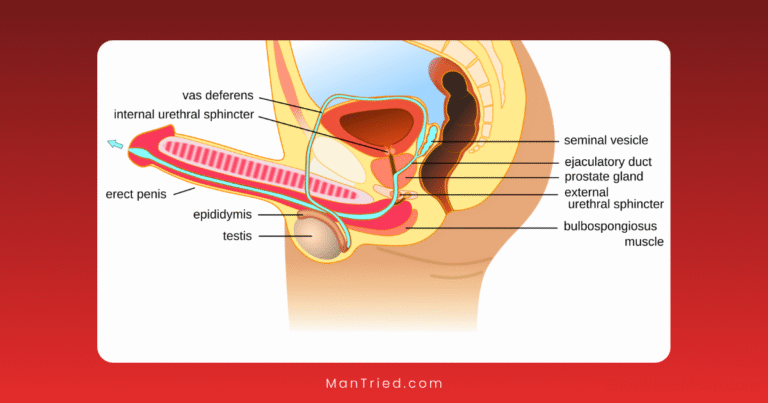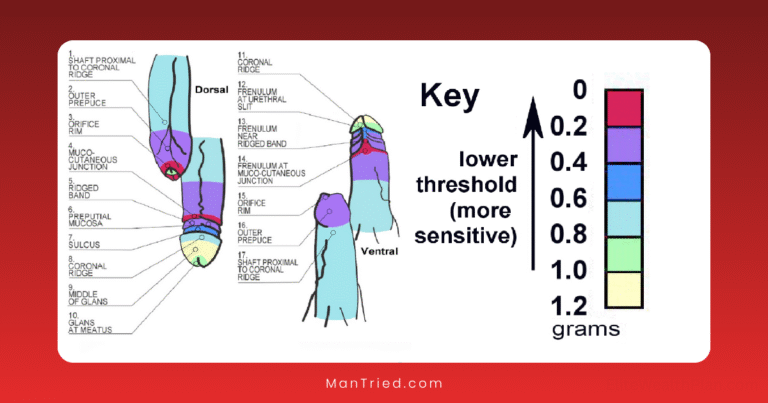PrEP and PEP: HIV Prevention Options for Sexually Active Men

HIV prevention has evolved dramatically over the past decade. Gone are the days when condoms were the only reliable defense against HIV transmission. Today, powerful medication-based prevention strategies—Pre-Exposure Prophylaxis (PrEP) and Post-Exposure Prophylaxis (PEP)—offer highly effective protection options for sexually active men.
This comprehensive guide explores everything you need to know about these game-changing HIV prevention tools: how they work, their effectiveness, how to access them, and how to determine if they’re right for you.
Understanding the Basics: PrEP vs. PEP
While both PrEP and PEP involve antiretroviral medications similar to those used to treat HIV, they serve different purposes in prevention:
Pre-Exposure Prophylaxis (PrEP)
PrEP is a preventive medication taken by HIV-negative individuals before potential exposure to HIV. Think of it as similar to how you might take antimalarial medication before traveling to regions where malaria is common.
According to the Centers for Disease Control and Prevention (CDC), when taken as prescribed, PrEP reduces the risk of getting HIV from sex by about 99% and from injection drug use by at least 74%.
Post-Exposure Prophylaxis (PEP)
PEP is an emergency medication taken after a potential exposure to HIV. It must be started within 72 hours (3 days) of possible exposure and continued for 28 days.
PEP works by stopping the virus from establishing itself in the body after exposure. According to HIV.gov, PEP has shown an 81% reduction in HIV infection among those who received treatment after exposure.
PrEP: A Closer Look at Your Options
PrEP has evolved from a single daily pill to multiple options with different administration methods. Here’s what’s available in 2025:
Oral PrEP Options
- Truvada® (emtricitabine/tenofovir disoproxil fumarate or F/TDF)
- The original PrEP medication
- One pill taken daily
- Approved for all people at risk for HIV through sex or injection drug use
- Generic versions now available, reducing cost barriers
- Descovy® (emtricitabine/tenofovir alafenamide or F/TAF)
- Newer formulation with potentially fewer kidney and bone density side effects
- One pill taken daily
- Approved for men who have sex with men and transgender women
- Not approved for those at risk through receptive vaginal sex (insufficient data)
Injectable PrEP Options
- Apretude® (cabotegravir)
- Long-acting injectable given every two months
- Administered as two initial injections one month apart, then every two months thereafter
- Over 99% effective in clinical trials
- Eliminates daily pill adherence challenges
- Approved for all adults and adolescents at risk through sex
- Yeztugo® (lenacapavir)
- Ultra-long-acting injectable given just twice yearly
- Demonstrated 100% effectiveness in clinical trials
- Newest option on the market
- Reduces clinic visits to just two per year
Dr. Demetre Daskalakis, Director of the CDC’s Division of HIV Prevention, notes: “The expansion of PrEP options represents a significant advance in HIV prevention. Having multiple choices means individuals can select the option that best fits their lifestyle and preferences.”
Effectiveness and Adherence
The effectiveness of PrEP is directly tied to adherence:
- Daily oral PrEP: Requires consistent daily use to maintain protective levels in the bloodstream
- Injectable PrEP: Maintains protective levels between injections without daily adherence
Studies show that injectable PrEP may be particularly beneficial for individuals who struggle with daily pill-taking. According to research published in the New England Journal of Medicine, injectable cabotegravir was more effective than daily oral PrEP in preventing HIV infection, largely due to the adherence advantage.
PEP: Emergency Protection After Exposure
While PrEP is planned prevention, PEP serves as an emergency intervention after a potential HIV exposure has occurred.
When to Consider PEP
PEP should be considered after:
- Condomless sex with someone who has or might have HIV
- Condom breakage during sex with someone who has or might have HIV
- Sharing needles or injection equipment
- Sexual assault
- Occupational exposure (e.g., needlestick injuries for healthcare workers)
The PEP Process
- Urgency is critical: Must be started within 72 hours of exposure (ideally sooner)
- Initial assessment: Includes HIV testing to confirm you’re HIV-negative
- Medication regimen: Typically a 28-day course of three antiretroviral drugs
- Follow-up testing: HIV testing at completion and again at 3 months
PEP Medications
The CDC-recommended PEP regimen for adults includes:
- Tenofovir disoproxil fumarate (TDF) + emtricitabine (F) once daily, plus
- Either raltegravir (RAL) twice daily or dolutegravir (DTG) once daily
Alternative regimens may be prescribed based on individual health factors or potential drug interactions.
Who Should Consider PrEP and PEP?
PrEP Candidates
PrEP is recommended for HIV-negative men who:
- Have a sexual partner with HIV
- Have had anal or vaginal sex without condoms with multiple partners
- Have been diagnosed with a sexually transmitted infection (STI) in the past 6 months
- Share injection equipment when using drugs
- Have been prescribed PEP multiple times
The CDC notes that anyone who requests PrEP should be considered for it, regardless of reported risk factors.
PEP Candidates
PEP is appropriate for anyone who has experienced a possible HIV exposure within the past 72 hours and is not already on PrEP.
Dr. Carlos del Rio, Professor of Medicine at Emory University, emphasizes: “PEP should be considered an emergency intervention. The sooner it’s started after exposure, the more effective it is—ideally within the first 24 hours.”
Accessing PrEP and PEP: Practical Considerations
Healthcare Providers
Both PrEP and PEP require a prescription. You can obtain these from:
- Primary care physicians
- Sexual health clinics
- Infectious disease specialists
- Telehealth providers specializing in sexual health
Many cities now have same-day PrEP programs that allow you to start medication immediately after your initial visit.
Insurance Coverage and Cost
For PrEP:
Under the Affordable Care Act, most private insurance plans, Medicaid, and Medicare must cover PrEP without cost-sharing (no copays or deductibles). This includes:
- The medication itself
- Quarterly HIV testing
- STI testing
- Kidney function tests
However, a legal challenge (Braidwood Management Inc. v. Becerra) currently before the Supreme Court could potentially impact this coverage in the future.
For those without insurance, several options exist:
- Ready, Set, PrEP: A federal program providing free PrEP to eligible individuals
- Manufacturer assistance programs: Gilead (maker of Truvada and Descovy) and ViiV Healthcare (maker of Apretude) offer assistance programs
- State PrEP assistance programs: Many states have programs to help cover PrEP costs
- Community health centers: Often provide PrEP on a sliding fee scale
For PEP:
- Most insurance plans cover PEP, though copays and deductibles may apply
- For sexual exposure (non-occupational PEP), patient assistance programs may help with costs
- For occupational exposure (e.g., healthcare workers), employers typically cover costs
- Emergency Medicaid may cover PEP in some states
According to a study published in Health Affairs, the cost of PEP without insurance can range from $600 to $1,000 for the full 28-day course.
Side Effects and Monitoring
PrEP Side Effects
Most people tolerate PrEP well, but potential side effects include:
For oral PrEP (Truvada/F-TDF):
- Initial “startup syndrome”: Nausea, headaches, fatigue (typically resolves within a few weeks)
- Potential long-term effects: Small decreases in kidney function and bone mineral density
For oral PrEP (Descovy/F-TAF):
- Similar initial side effects but with less impact on kidneys and bones
- Potential for slight weight gain and cholesterol changes
For injectable PrEP (Apretude/cabotegravir):
- Injection site reactions (pain, swelling)
- Headache, fever, or fatigue after injection
For injectable PrEP (Yeztugo/lenacapavir):
- Injection site reactions
- Headache or fatigue
Dr. Kenneth Mayer, Medical Research Director at Fenway Health, notes: “The side effects of PrEP are generally mild and temporary. For most people, the benefits of HIV prevention far outweigh these manageable side effects.”
PEP Side Effects
PEP regimens may cause:
- Nausea, vomiting, diarrhea
- Headache, fatigue
- Disrupted sleep patterns
These side effects can be more pronounced than with PrEP due to the three-drug combination used.
Required Monitoring
For PrEP:
- Initial HIV test before starting
- HIV testing every 3 months
- STI screening every 3-6 months
- Kidney function tests (for oral PrEP)
- Hepatitis B screening before starting
For PEP:
- Initial HIV test before starting
- Follow-up HIV testing at completion of 28-day course
- Final HIV test 3 months after exposure
Combining Prevention Methods: A Comprehensive Approach
Neither PrEP nor PEP should be viewed as a complete replacement for other HIV prevention methods. The most effective approach combines multiple strategies:
- PrEP or PEP + condoms: Provides protection against other STIs
- Regular STI testing: Identifies and treats infections that could increase HIV risk
- Open communication with partners: Discussing HIV status and prevention strategies
- Harm reduction for people who inject drugs: Access to clean equipment and substance use treatment
Dr. Leandro Mena, Director of the CDC’s Division of STD Prevention, emphasizes: “PrEP and PEP are powerful tools, but they work best as part of a comprehensive sexual health strategy that includes regular testing and other prevention methods.”
The Psychological and Social Aspects of PrEP and PEP
Overcoming Stigma
Despite their effectiveness, both PrEP and PEP can carry social stigma. Some men report concerns about being perceived as promiscuous or engaging in risky behavior if they use these prevention methods.
Research published in the Journal of the International AIDS Society found that stigma remains a significant barrier to PrEP uptake, particularly among racial and ethnic minority communities.
Strategies to address stigma include:
- Education about PrEP as a responsible health choice
- Community outreach and normalization
- Provider training to offer these options without judgment
Talking to Partners
Discussing PrEP or PEP use with partners can be challenging but important. Consider these approaches:
- Frame it as a mutual health decision: “I care about both of our health, which is why I use PrEP.”
- Use “I” statements: “I feel more comfortable and confident in our relationship knowing I have this protection.”
- Provide information: Many people are still unfamiliar with these prevention options.
Mental Health Considerations
For some men, anxiety about HIV can impact sexual enjoyment and relationship satisfaction. PrEP and PEP can provide peace of mind that enhances overall well-being.
A study in the Journal of Acquired Immune Deficiency Syndromes found that PrEP users reported decreased anxiety about HIV and improved sexual satisfaction.
The Future of HIV Prevention
HIV prevention continues to evolve rapidly. Emerging options include:
- Implantable PrEP: Long-acting implants that could provide protection for a year or more
- Preventive HIV vaccines: Multiple candidates in various stages of clinical trials
- Multipurpose prevention technologies: Products that prevent both HIV and pregnancy
Dr. Anthony Fauci, former director of the National Institute of Allergy and Infectious Diseases, notes: “We’re moving toward an era where HIV prevention can be increasingly individualized, with multiple options to fit different needs and preferences.”
Making Your Decision: Is PrEP or PEP Right for You?
Consider these questions when evaluating whether PrEP is appropriate for your situation:
- Are you at substantial risk for HIV based on your sexual practices or injection drug use?
- Can you commit to the required medical visits and testing?
- Which administration method (daily pill or periodic injection) better fits your lifestyle?
- Do you have concerns about consistently using other prevention methods like condoms?
- Would the peace of mind provided by additional protection benefit your mental health?
For PEP, the decision is typically more straightforward—if you’ve had a potential HIV exposure within the past 72 hours, seeking PEP immediately is recommended.
Conclusion: Empowered Prevention
PrEP and PEP represent remarkable advances in HIV prevention technology, offering sexually active men unprecedented control over their health. By understanding these options, you can make informed decisions that align with your lifestyle, preferences, and risk factors.
Remember that accessing these medications requires proactive engagement with healthcare providers. Don’t wait for your provider to bring up these options—advocate for your health by initiating the conversation.
With proper use, these powerful prevention tools can provide both physical protection and peace of mind, allowing for healthier and more confident sexual expression.






